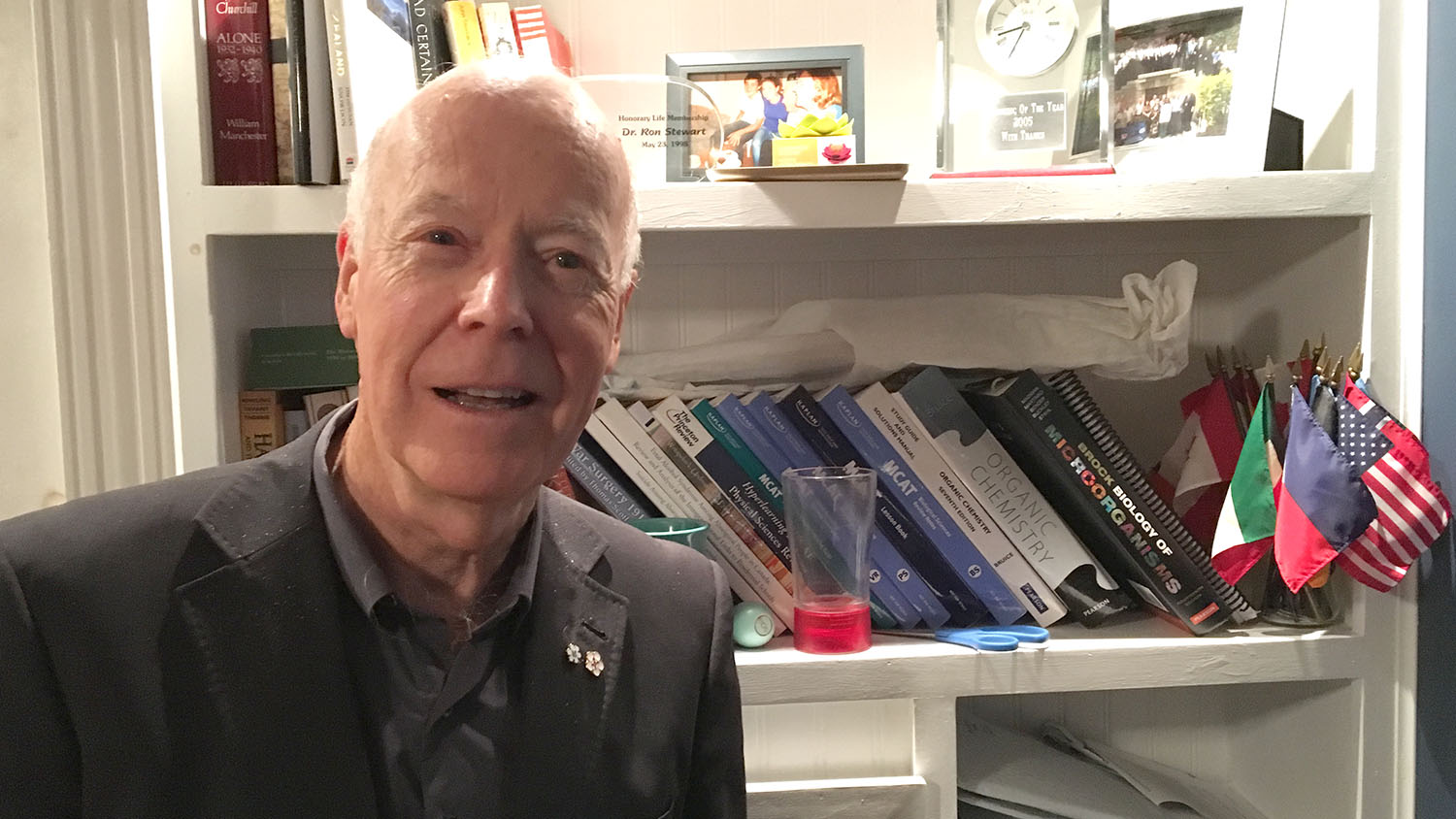paramedics
EHS founder weighs in on ambulance issues
Paramedics in Nova Scotia are using #codecritical to highlight service shortages

caption
Dr. Ron Stewart brought EHS to Nova Scotia.Editor's Note
The author is a former paramedic.
The doctor who started Nova Scotia’s ambulance service isn’t surprised to hear complaints from paramedics, but he’s glad they are coming together in search of a solution.
“The reason for it may not be particularly comforting to me, because it may well be a reaction against what they perceive to be a crisis,” Dr. Ron Stewart said in a conversation Tuesday with The Signal in his Halifax home.
“I think you should be meeting all the time, because you’re faced with crises every day. I’m hoping they make this a regular thing.”
Stewart spoke ahead of Wednesday’s conference that brought together unions representing paramedics in Nova Scotia, New Brunswick and Prince Edward Island. They discussed professional challenges, like offload delays and paramedic burnout. Related stories
The Nova Scotia Paramedic Union has been public about their struggles on Twitter with the hashtag #codecritical. One tweet, sent out Tuesday, said there were not enough ambulances available in the Halifax Regional Municipality or Truro.
#codecritical in HRM this morning at approx 0830 with high call volume and extended responses. Also #codecritical in the North. Truro area was low on avail units this am. #nspoli @NSNDP @nspc @NS_Labour @GaryBurrill @TammyMartinMLA @TimHoustonNS @karla_macf_pc @DannyNSFL
— IUOE Local 727 (@IUOEnsparamedic) November 13, 2018
Stewart understands big problems exist in health care, but doesn’t agree they constitute a crisis.
“No, I don’t, but I’m not out in the street,” he said. “If it is in crisis, and you feel that way, then the question is, what measure do you take to make it better?
The birth of EMS
As part of his emergency medical residency in in the U.S., Stewart helped to organize the first emergency medical services in Los Angeles and Pittsburgh in the 1970s. He also wrote the first paramedic training manual in 1974.
He was determined to bring the service home to Nova Scotia, where he became province’s minister of health in 1993. “We ran on the platform that we would institute a new advanced-care system called Emergency Health Services,” he said.
In 1995 the plan was put into motion, and soon over 50 ambulance services had been amalgamated into one. EHS is still the ambulance service provider in Nova Scotia today.
Stewart said he wanted to “change the system so that we had modern vehicles, we had modern training, we had what we call paramedics.”
A system in crisis?
He said the current situation is not something that was easy to see coming. Technological advances mean more problems can be treated, so automatically there will be more patients who couldn’t have been helped before. The increasing number of patients is an issue throughout health care, as resources become stretched to serve ever more people.
Things like MRI’s and CT scans, for example, didn’t exist when Stewart was in medical school. The health-care system has stressed itself because it can now detect and treat more illnesses and people, he said.
This can lead to the mentioned problems, like offload delays.
“It’s not a problem with EHS. We are the recipient of the problem,” he said. He thinks the big issue is not enough hospital beds. “You can’t fix the offload problem if you don’t fix the downstream issue, which is everyone in the hospital who needs to be in an acute care bed, we know that’s not so. How do we provide it in a system that is now approaching over 50 per cent of the budget of our province?”
In fact, the province has committed closer to 40 per cent of its money to health care in the budget.
System stressors
Stewart says there are many other stressors for paramedics including the psychological effects. He used an example of taking an 18-year-old trainee who witnesses “a terrible scene that she never forgets.”
“Do we have the accommodation for that effect on personnel? We haven’t solved that yet,” said Stewart.
As for public stressors, Stewart thinks there is “a crisis of confidence.” He said people know they have a reliable 911 system and can count on an ambulance showing up.
“There are competent people doing competent things … but you have to use it to recognize that,” he said. “To use it is the issue that many people will raise, and they’ll say that we need more doctors, more caregivers … and that can be debated. Perhaps we need more options.”
The wrong fix
Stewart recently noticed an advertisement in a paramedic magazine advising people not to call 911 unless they had a real emergency, like a heart attack or a stroke.
“It was crazy; that is a retrospective view,” he said. “You can’t expect people to avoid dialing 911 because they haven’t read the list that will equate with an emergency.”
Stewart said it is not up to providers to decide what is an emergency. For example, if a violinist breaks his finger and has to perform tomorrow, that’s an emergency for him — even if health-care providers disagree. He thinks providers should aim to efficiently serve the needs perceived by citizens.
“We need to have a system in place that says you do not need lights and sirens coming up the road for your stubbed toe. But we need a system to deal with it, because we can’t say ‘this is 911, we don’t deal with stubbed toes.’”
The future of EMS
EHS turned 20 last year, and Stewart marked that anniversary with a $1.3-million gift to the Dalhousie Medical Research Foundation. The money was for an annual EMS research symposium and the creation of a Chair in EMS Research Department at Dalhousie University.
Stewart is eager to see a post-secondary program created to bring paramedics into Dalhousie and is confident it will happen, despite current issues.
“I am really convinced that this academic pathway will be realized before I go out and get hit by the bus,” he said, laughing.


R
Renee
D
David Whittaker
T
Tim Hillier
D
David Whittaker
C
Craig P
D
David Whittaker
G
Geoffrey Palmeter
D
David Whittaker
C
Carl
D
David Whittaker